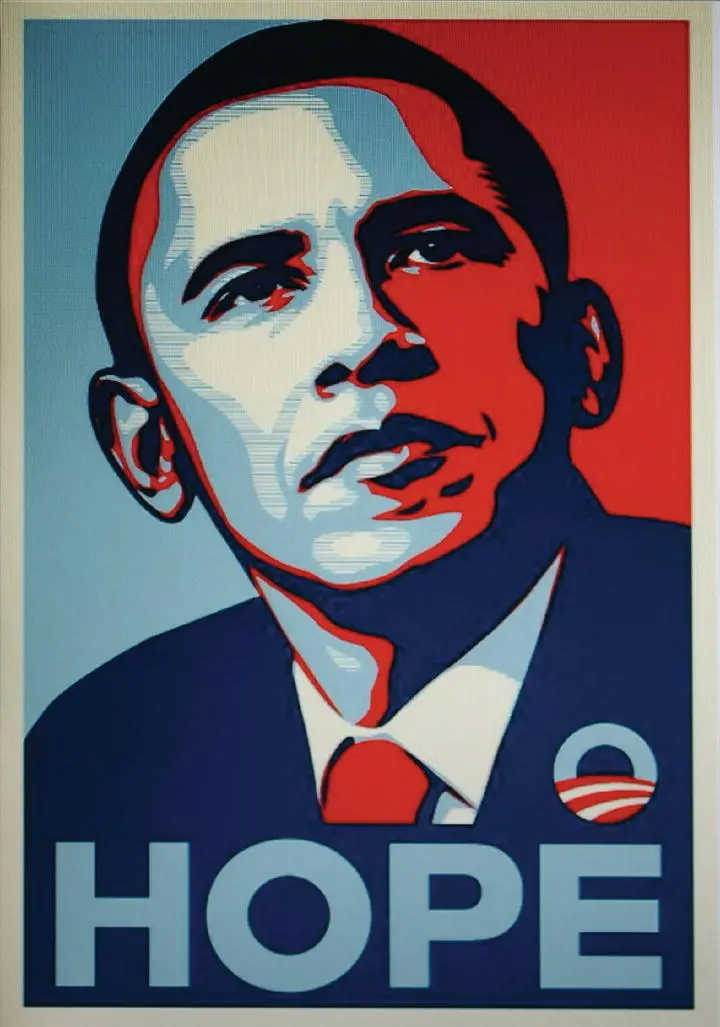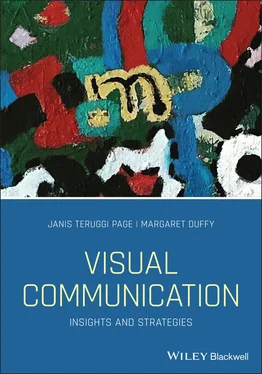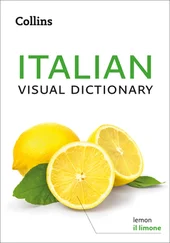Advertisers, both in print and video, rely heavily on metaphors because they point us to certain elements – we call this salience, or how much something stands out or draws our attention (Kress and van Leeuwen, 1998, p. 210). The salience factors that we are drawn to can include contrast, a familiar or iconic photo, the size and shape of an element, or a top left position in Western cultures. Often, you'll see a familiar image – perhaps a celebrity's photo – in a surprising or incongruous setting or position. The creator of the ad intends that you interpret the image in a specific way, drawing meaning from it.

Figure 2.6 The World Wildlife Fund uses a visual metaphor for global warming.
Source: Romolo Tavani/123RF.
The poster from the World Wildlife Fund (Figure 2.6) uses a powerful visual metaphor to highlight the risks of global warming. As you can see, the visual metaphor suggests the earth and ice cream share traits of melting fast. While the small wording below relays the message in the visual, the dramatic presentation of the melting earth cone against a stark black background dramatizes the danger in a memorable way. Again, we can see the power of visuals to persuade and provide real impact.
Visual metaphors may use various approaches including fear appeals of varying intensity that may be effective in changing behaviors. They also may cause psychological distress or harm, such as the use of graphic images illustrating child abuse or car injuries due to impaired driving. Visual metaphors also open the door to puffery: the practice of exaggerating claims in advertising (Richards, 2016; Thorson and Duffy, 2016). Richards discusses the notion that some critics consider puffery to be deceptive. Others say that statements or images such as “Budweiser is the king of beers” or a video showing a man wearing his Skechers shoes outrunning a cheetah aren't deceptive because they are in the realm of fantasy and thus are unlikely to mislead a consumer.
Visual appropriation, the intentional borrowing, copying, and alteration of preexisting images and objects, is a strategy long used by artists. For example, in 1962 Andy Warhol painted images of the Campbell's tomato soup can. It led to a great debate about the ethics of such work, and appropriation remains an ethical gray area today.
Visual appropriation has been strategically used in negative political advertising. In 2016, an attack ad by Republican primary candidate Ted Cruz against rival Marco Rubio attempted to visually paint Rubio as the Republican Obama. One of the final images on a campaign video make an analogy between the Obama “Hope” poster by Shepard Fairey (Figure 2.7) and a photoshopped image of Marco Rubio (Figure 2.8). The Rubio image used the recognizable style of the Fairey poster, seeking to short‐circuit people’s analysis of Rubio’s characteristics and policies by heightening his presumed similarities to Obama. In addition, it used the creative work of Fairey in a different context. In this case, a political operative applied a digital filter known as posterizing. Widely available apps allow users to use a limited number of colors on a photo, thus giving it the effect of a movie or music poster. This brings up the question of visual plagiarism such as using elements of one image combined with others to create a different representation, image, or work of art. Regarding the original Fairey graphic, AP sued the artist in 2011 claiming copyright ownership over the image, as it was closely based on an AP photo. Both sides settled on sharing rights to the image (Kravets, 2011).

Figure 2.7 Original image inspiring the Rubio photoshop.
Source: Aaron Alex / Alamy Stock Photo.

Figure 2.8 Photoshopped image of Marco Rubio.
Source: https://www.youtube.com/embed/uKcQoFSVvGQ?feature=oembed, Ted Cruz.
Mashups or remixes are now common, and some say they are simply new cultural practices enabled by technology. Vidding, or editing and adding to existing video footage, may be used to comment, satirize, or to offer a fresh perspective on an event or viewpoint. This brings up both legal and ethical implications. Is it proper to use materials that someone else has created? In addition, what legal policies may be applicable to these situations? In these cases, copyright and “fair use” laws are in play. Copyright laws are intended to protect writers, photographers, and videographers from having their work stolen or used inappropriately. It also protects their rights to be compensated (Brooks et al., 2020). However, rules regarding fair use of copyrighted materials allow others to use small portions of those materials when they are properly attributed. In this book, our use of others' work and ideas are examples of fair use or copyrighted use has been sought and granted. Images, especially in the age of digital work, present ever more complex ethical questions.
There are tensions between stealing another's work and an “homage” to another's creation. An homage is a reference, reconfiguring, and sometimes a recreation of an image or work of art, often done with the goal of honoring and elaborating on that work. Moviemakers frequently will adopt or reference scenes from other movies. For example, director Quentin Tarantino in The Hateful Eight uses costumes, snips of dialogue, and scene setups that call on classic western films (Miller, 2015). To use the Obama “Hope” poster by Shepard Fairey in this chapter required that we provide compensation to the copyright holders, in part because it is a complete work and it wouldn't be possible to use only a portion of it.
However, imagine if an individual substantially altered the Obama “Hope” poster, animating it, inserting new characters, settings, or backgrounds. Does it then become a different creation, possibly with copyright protection itself? What if it is then disseminated on social media? Noted visual theorist William J. Mitchell (1994) suggests that easily replicable visual images have profoundly changed how we interact with those images both individual and societally.
We might best regard digital images, then, neither as ritual objects (as religious paintings have served) nor as objects of mass consumption … but as fragments of information that circulate in high‐speed networks now ringing the globe that can be received, transformed, and recombined like DNA to produce new intellectual structures having their own dynamics and value
(Mitchell 1994, pp. 53–54).
Mitchell and others point out how easily manipulated and shared images seem to have less and less relationship with an “external referent” (p. 55) or to be mirrors of what we think of as our everyday reality. Visuals are never just neutral representations of the world. Instead, they are interpretations that may have different meanings for different people and, intentionally or unintentionally, “argue” for a certain point of view.
Читать дальше















